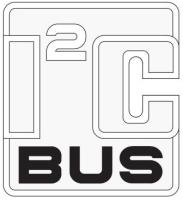| www.tmatlantic.com
Test & Soldering Equipment On-line Store |
|
D.E.V.I.C.E. (Wiki)Calculators Services |
|||||
Filter by first letter
|
I²C
I²C (Inter-Integrated Circuit; I2C or IIC) is a synchronous, multi-master/multi-slave (controller/target), packet switched, single-ended, serial communication bus invented in 1982 by Philips Semiconductors. It is widely used for attaching lower-speed peripheral ICs to processors and microcontrollers in short-distance, intra-board communication. Several competitors, such as Siemens, NEC, Texas Instruments, STMicroelectronics, Motorola, Nordic Semiconductor and Intersil, have introduced compatible I²C products to the market since the mid-1990s. System Management Bus (SMBus), defined by Intel in 1995, is a subset of I²C, defining a stricter usage. One purpose of SMBus is to promote robustness and interoperability. Accordingly, modern I²C systems incorporate some policies and rules from SMBus, sometimes supporting both I²C and SMBus, requiring only minimal reconfiguration either by commanding or output pin use. Citing: Wikipedia.org |
Site mapPrivacy policyTerms of Use & Store PoliciesHow to BuyShippingPayment




|

























